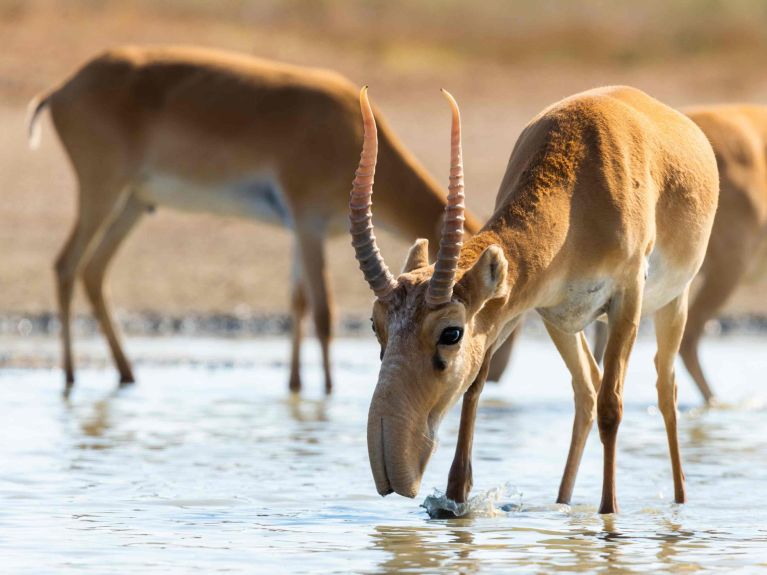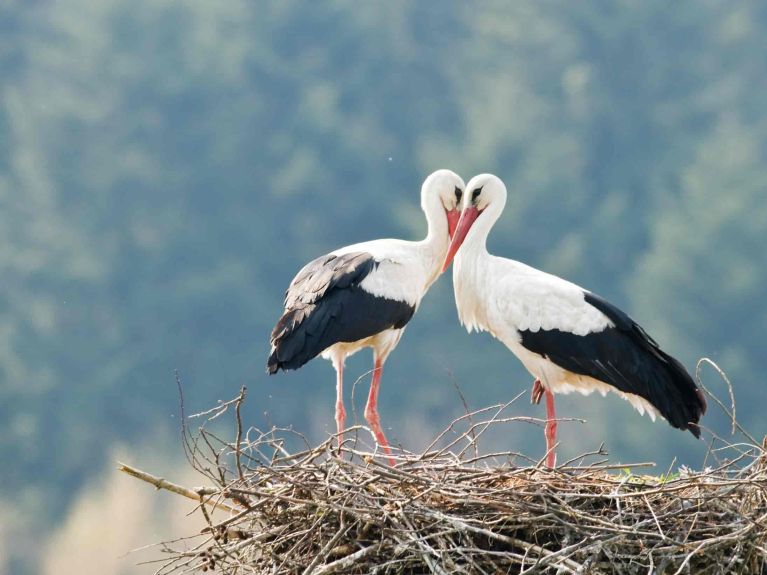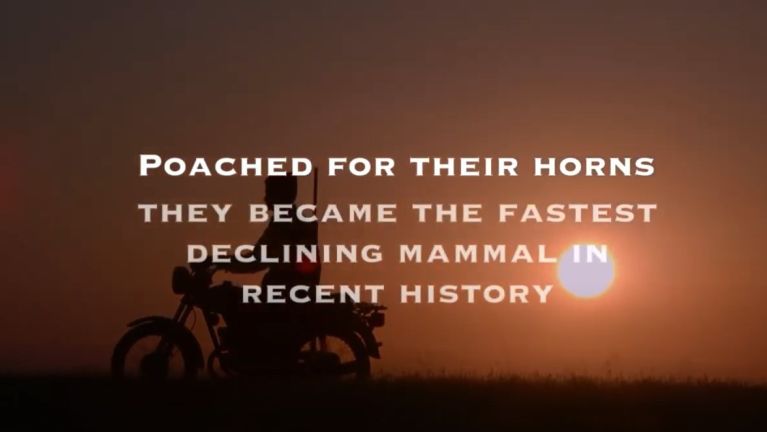Species protection without borders
From saiga antelopes in Kazakhstan to migratory birds in Europe and Africa, protecting species requires international partnerships.

Responsibility for species protection and protecting biodiversity falls to each and every person, to communities and states. Projects are often particularly successful when states and NGOs can combine skills and money for collaborative projects. Here we present two exceptional projects with German involvement.
Dieses YouTube-Video kann in einem neuen Tab abgespielt werden
YouTube öffnenThird party content
We use YouTube to embed content that may collect data about your activity. Please review the details and accept the service to see this content.
Open consent formAltyn Dala – saving the saiga antelope in Kazakhstan
With its bulbous nose, the saiga antelope looks a bit like a computer-generated being from a Star Wars movie. And it very nearly became a virtual creature. There were only around 150.000 of these animals left on the steppes and semi-deserts of Kazakhstan until a joint effort where the Frankfurt Zoological Society, Fauna & Flora International, and Britain’s Royal Society for the Protection of Birds joined forces with the Kazakh government and NGOs to protect the saiga antelope from extinction. The effort involved researching the animal’s way of life, setting up reserves and protecting migration corridors. Rangers were trained and deployed, and substantial fines were imposed on poaching. Together, this led to the number of animals in Kazakhstan returning to nearly a million. But what about the saiga’s nose? It helps regulate the temperature of the air it breathes, which can exceed 40° in summer and drop below minus 30° in winter.

AfriBiRds – laying the foundations to protect migratory birds
The biosphere has no borders, and few animals demonstrate this more clearly than migratory birds. From Canadian bar-tailed godwits which can fly over 12,000km non-stop across the Pacific to New Zealand in little more than ten days, to the millions of songbirds which move from Europe to Sub-Saharan Africa each Autumn and then return to their very “own” bush in Norway in the spring. Understanding their lives and how they survive needs reliable data. Making more of this data available is a core task of an international coalition funded by German government ministries. The AfriBiRds project (African Biosphere Reserves as pilot sites for monitoring and conservation of migratory birds) came about through a collaboration between Germany’s Nature And Biodiversity Conservation Union (NABU), Birdlife International, the UNESCO World Network of Biosphere Reserves, Comoé National Park in Côte d'Ivoire and the Omo Forest Reserve in Nigeria. The organisations jointly tested observation and counting methods, thereby standardising the basis for a better understanding of bird migration and international protection for birds.



